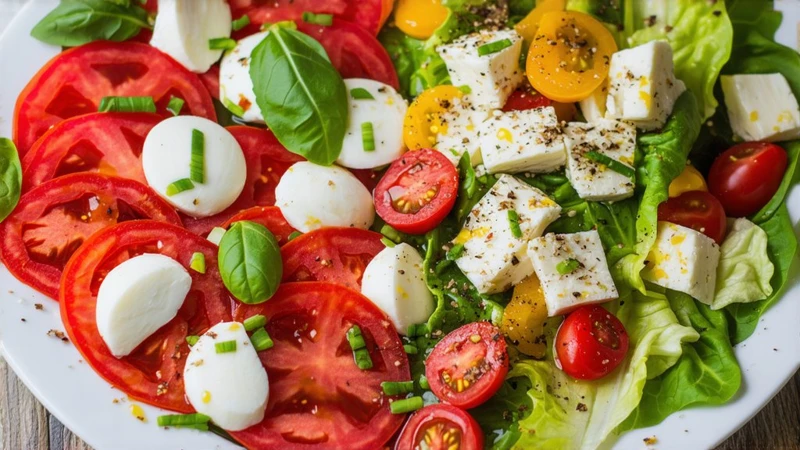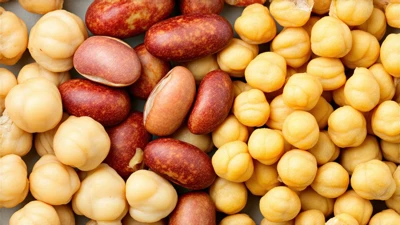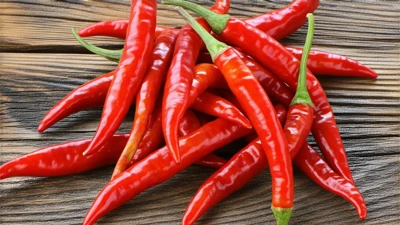
The Ultimate Showdown: Caprese Salad vs. Cobb Salad
Origin and cultural background
Caprese Salad: This Italian salad has its roots in the Campania region, where it originated in the early 20th century. Legend connects it to a patriotic chef who wanted to represent the colors of the Italian flag—red (tomato), white (mozzarella) and green (basil). It's a staple of cucina povera, with an emphasis on fresh, high-quality ingredients.
Cobb Salad: Born in 1937 at Hollywood's Brown Derby restaurant, the Cobb was supposedly invented by owner Robert Cobb for a late-night snack. Its gulpable mix of greens, proteins and fats catered to the post-Prohibition American economy's appetite for abundance.
Key Ingredients
| Caprese | Cobb |
|---|---|
| Fresh tomatoes | Romaine lettuce |
| Mozzarella (buffalo or cow's milk) | Avocado |
| Fresh basil | Hard-boiled eggs |
| Extra virgin olive oil | Bacon |
| Balsamic glaze | Grilled or roasted chicken |
| Salt and pepper | Blue cheese |
| Red wine vinaigrette |
Key Difference: Caprese is all about minimalism, Cobb is a smorgasbord of textures and flavors.
Nutritional Comparison
(Per standard serving, USDA data)
| Metric | Caprese (1 cup) | Cobb (1 cup) |
|---|---|---|
| Calories | 220 | 320 |
| Total Fat (g) | 15 | 25 |
| Saturated Fat (g) | 3 | 8 |
| Protein (g) | 9 | 14 |
| Carbohydrates (g) | 12 | 10 |
| Fiber (g) | 2 | 3 |
| Vitamin C (% DV) | 40% | 25% |
| Calcium (% DV) | 20% | 15% |
Takeaway: Cobb boasts more protein and fats, but twice the calories. Caprese, vitamin-rich simplicity, and lighter.
Flavor Profiles
Caprese: Bright, acidic tomatoes counter creamy mozzarella and peppery basil. The olive oil and balsamic are deep but not overpowering.
Cobb: A medley of savory (bacon, blue cheese), creamy (avocado, eggs) and tangy (vinaigrette).
Personal Opinion: I tend to favor Caprese in summer for its refreshing bite, but Cobb's umami-rich profile hits the spot in winter.
Texture Differences
Caprese has that soft, juicy mouthfeel (think: silky mozzarella, ripe tomatoes). Cobb pairs crisp lettuce with creamy avocado, crunchy bacon and chewy chicken.
Preparation Methods
Caprese: Cooking not needed — slice and layer.
Cobb: Involves grilling the chicken, frying the bacon, boiling the eggs.
Seasonal Availability
Caprese is best in summer, when tomatoes and basil hit their stride. (The components of Cobb's salad (avocado, bacon) are in season all year, though avocado prices jump in winter.)
Dietary Restrictions
Caprese: Vegetarian (if using rennet-free cheese).
Cobb: Includes meat (bacon, chicken) and dairy (eggs, cheese). Vegan versions replace the bacon with tempeh and use vegan cheese.
Health Benefits
Caprese
Lycopene: Antioxidant in tomatoes that may help prevent heart disease.
Calcium: Mozzarella strengthens bones.
Healthy Fats: The monounsaturated fats in olive oil make for heart-healthy fatty acids.
Cobb
Muscle-Mending Protein: Chicken and eggs help repair muscle.
Omega-3s: Promotes brain health with avocado.
Energy metabolism: Eggs and chicken.
Protein Content Comparison
Cobb tops with 14g protein/serving; trio of chicken, eggs and cheese. Caprese gives you 9g of it from mozzarella.
Fat Content and Types
The fats in Caprese are heart-healthy (olive oil, avocado). Cobb's 25g fat includes saturated fats from bacon and cheese.
Carbohydrate Content
Both are low carb, but Caprese's 12g (from tomatoes and balsamic) beats out Cobb's 10g.
Vitamin and Mineral Density
Caprese totals more vitamin C (40 percent of daily value) and Cobb more iron (from greens and meat).
Variety in Different Cuisines
Caprese is a Mediterranean tradition; Cobb rules American diners and barbie spreads.
Modern Variations on Traditional
Caprese: Avocado or pesto are modern twists.
Cobb: The vegan versions use tofu "bacon," dairy-free cheese.
Ease of Preparation
Caprese is 10 minutes; Cobb is 30-plus minutes, to cook components.
Prep + Cook Time
| Salad | Prep Time | Cook Time | Total |
|---|---|---|---|
| Caprese | 10 mins | 0 | 10 mins |
| Cobb | 15 mins | 15 mins | 30 mins |
Common Recipe Customizations
Caprese: Add prosciutto, or leave out the balsamic and use lemon.
Cobb: Replace turkey with chicken or add quinoa for some carbohydrates.
Pairing with Proteins
Caprese goes with grilled shrimp or salmon. Cobb pairs with steak or roasted tofu.
Pairing with Beverages
Caprese: Bright white wines (Pinot Grigio) or sparkling water with lemon.
Cobb: Big reds (Cabernet) or craft beer.
Cost Comparison
Caprese's fresh mozzarella ($8–$12/lb) and heirloom tomatoes ($4–$6/lb) drive up the cost. Cobb's cost depends on avocado ($2—$3 each) and bacon ($5—$7/lb).
Storage and Shelf Life
Both are best fresh. Caprese wilts in 2–3 hours; Cobb's cooked components hold for 1–2 days chilled.
Allergen Considerations
Caprese: Dairy (mozzarella).
Cobb: Dairy, eggs and potential cross-contamination with nuts in dressings.
Suitability for Meal Prep
Caprese does not store well, but Cobb can be shingled in 24-hour airtight containers.
Cultural Importance
Caprese represents Italian la dolce vita, while Cobb evokes mid-century American excess.
Audience Preferences
Vegetarians: Caprese.
Meat-Lovers: Cobb.
Sustainability of Ingredients
Caprese's seasonal vegetables and olive oil are more sustainable. Cobb's high water use (avocado) and emissions (bacon) are concerning.
Historical Evolution
Caprese evolved from post-W.W.II Italian cuisine, whereas Cobb's 1937 invention reflected Hollywood's glamour.
Verdict: Which Salad Wins?
Caprese rules for pure simplicity and nutrition and summer freshness. Cobb reigns as a hearty, protein-rich meal. It's only a choice of occasion: a light lunch or a dinner party centerpiece.

















